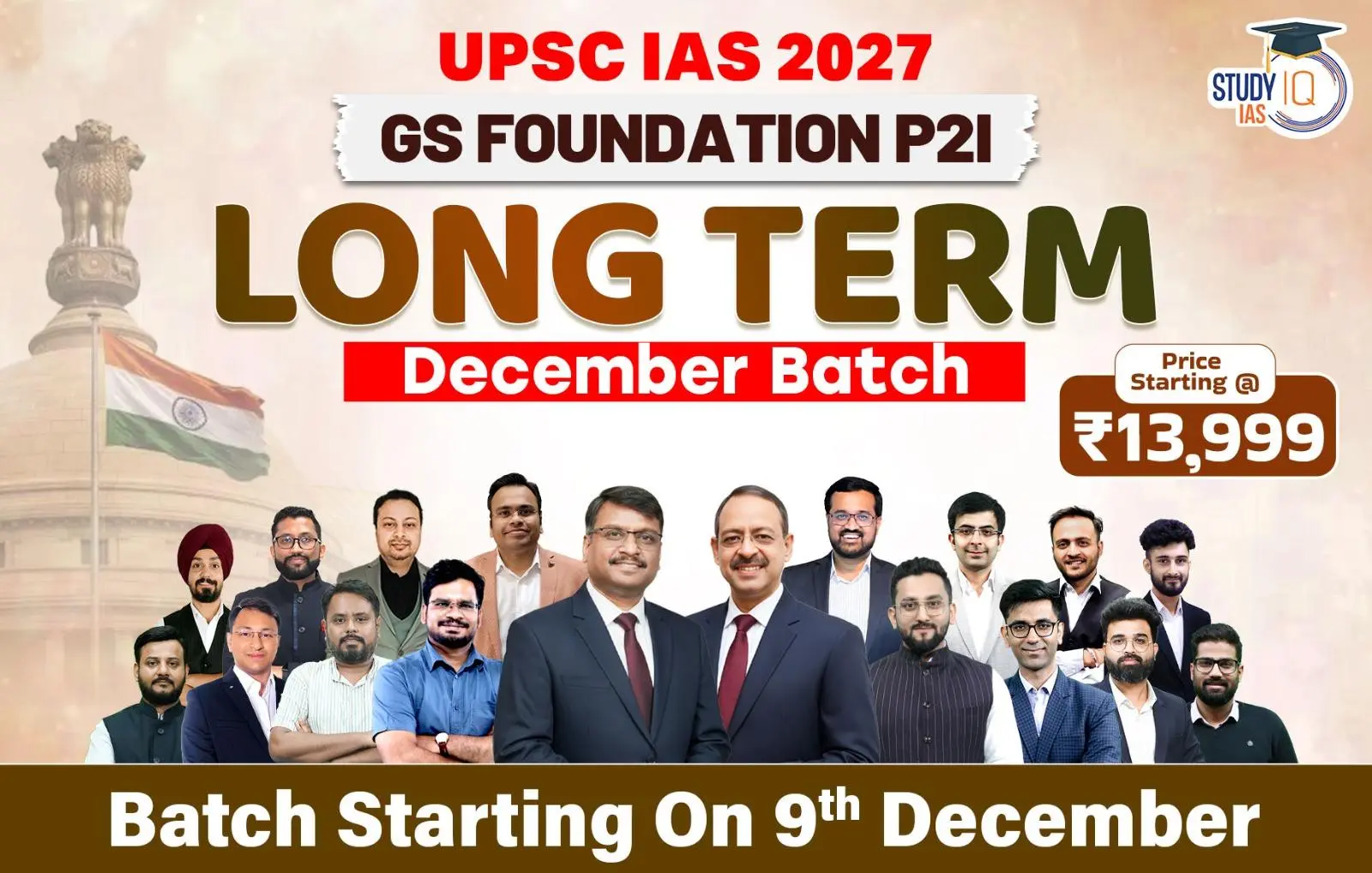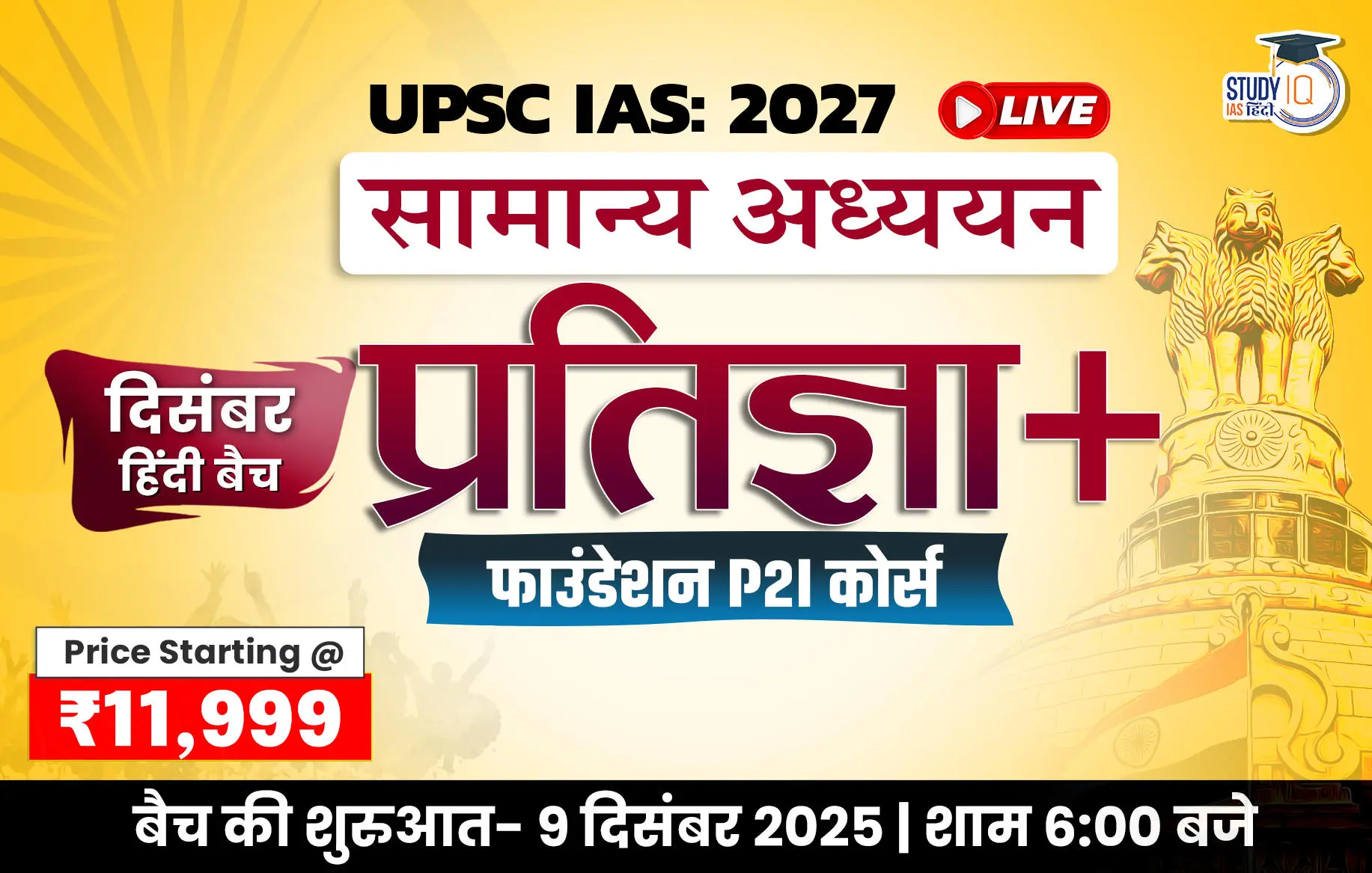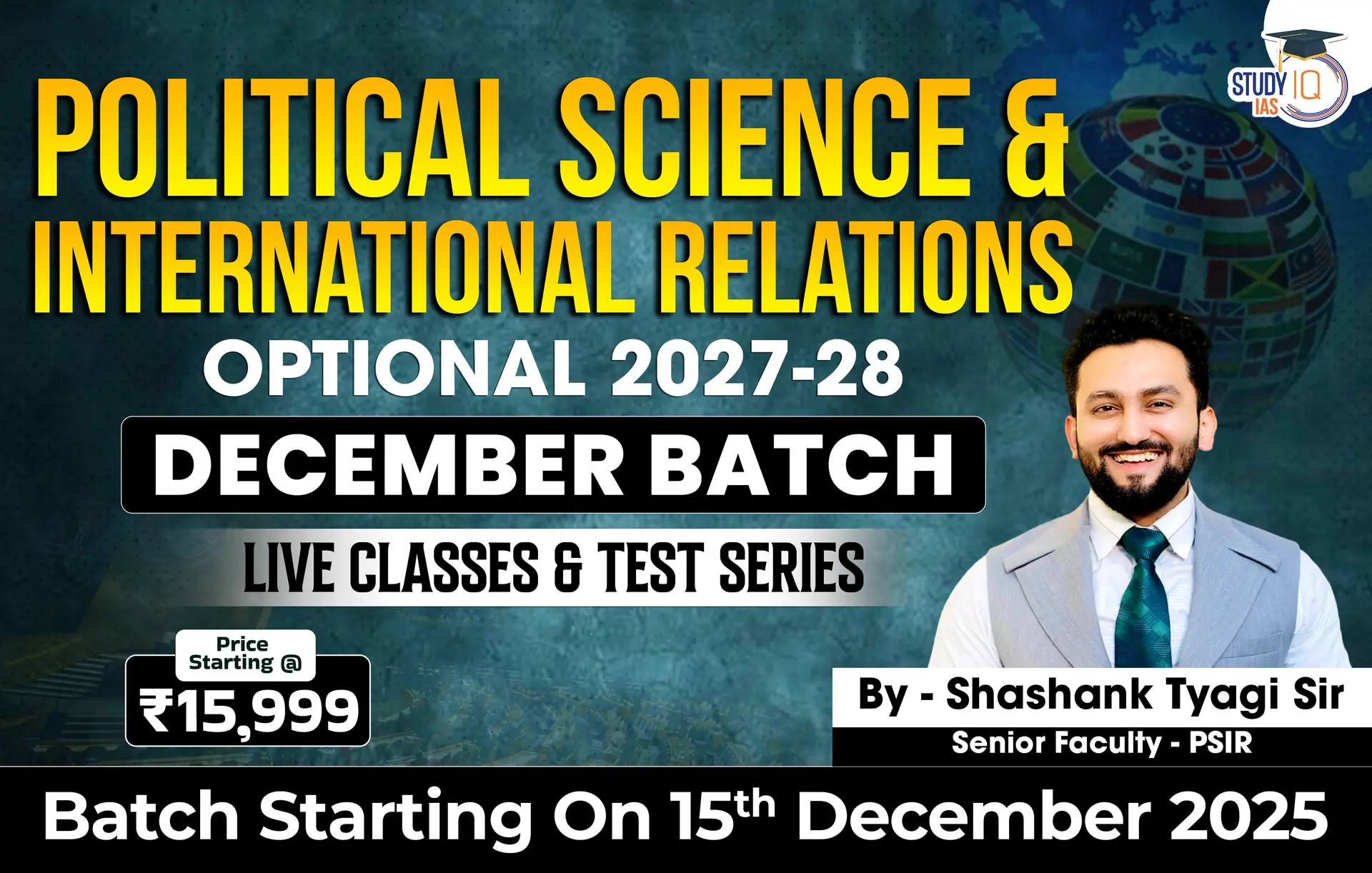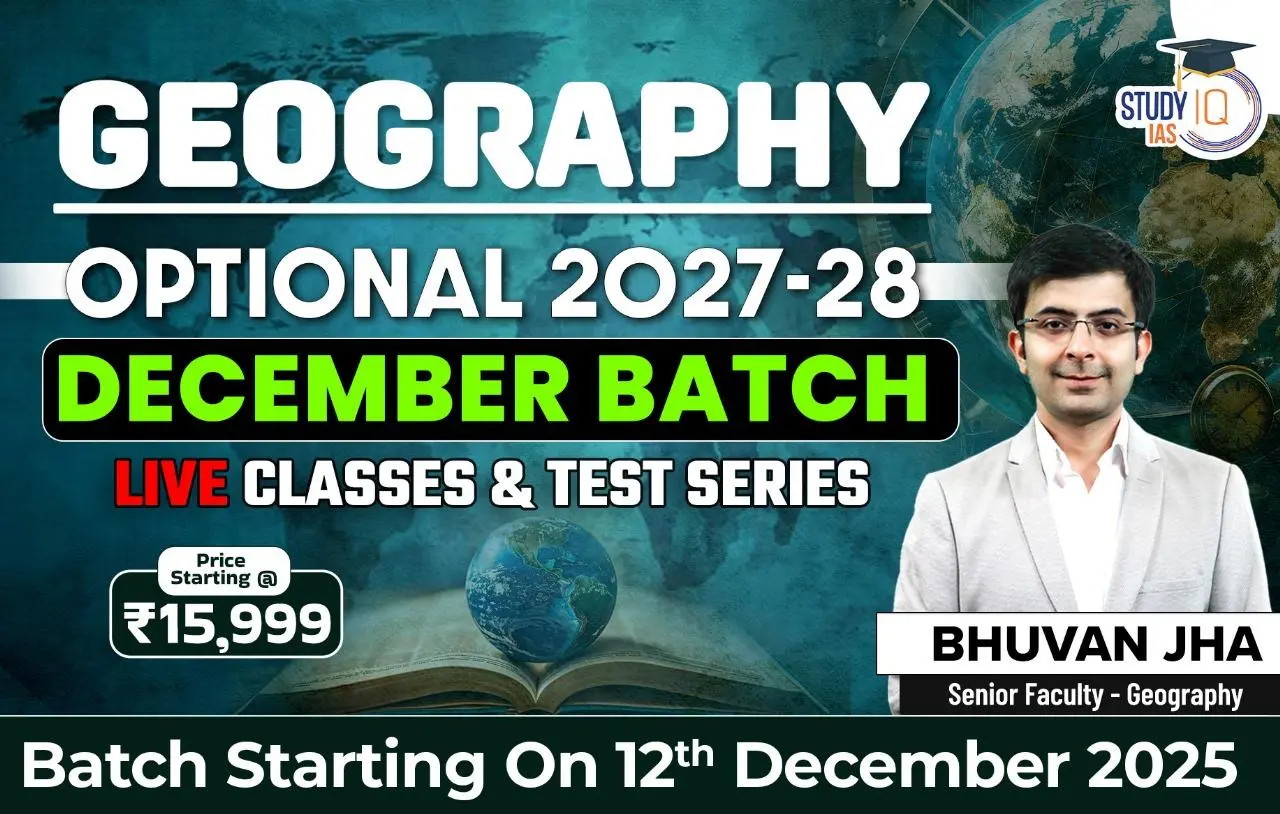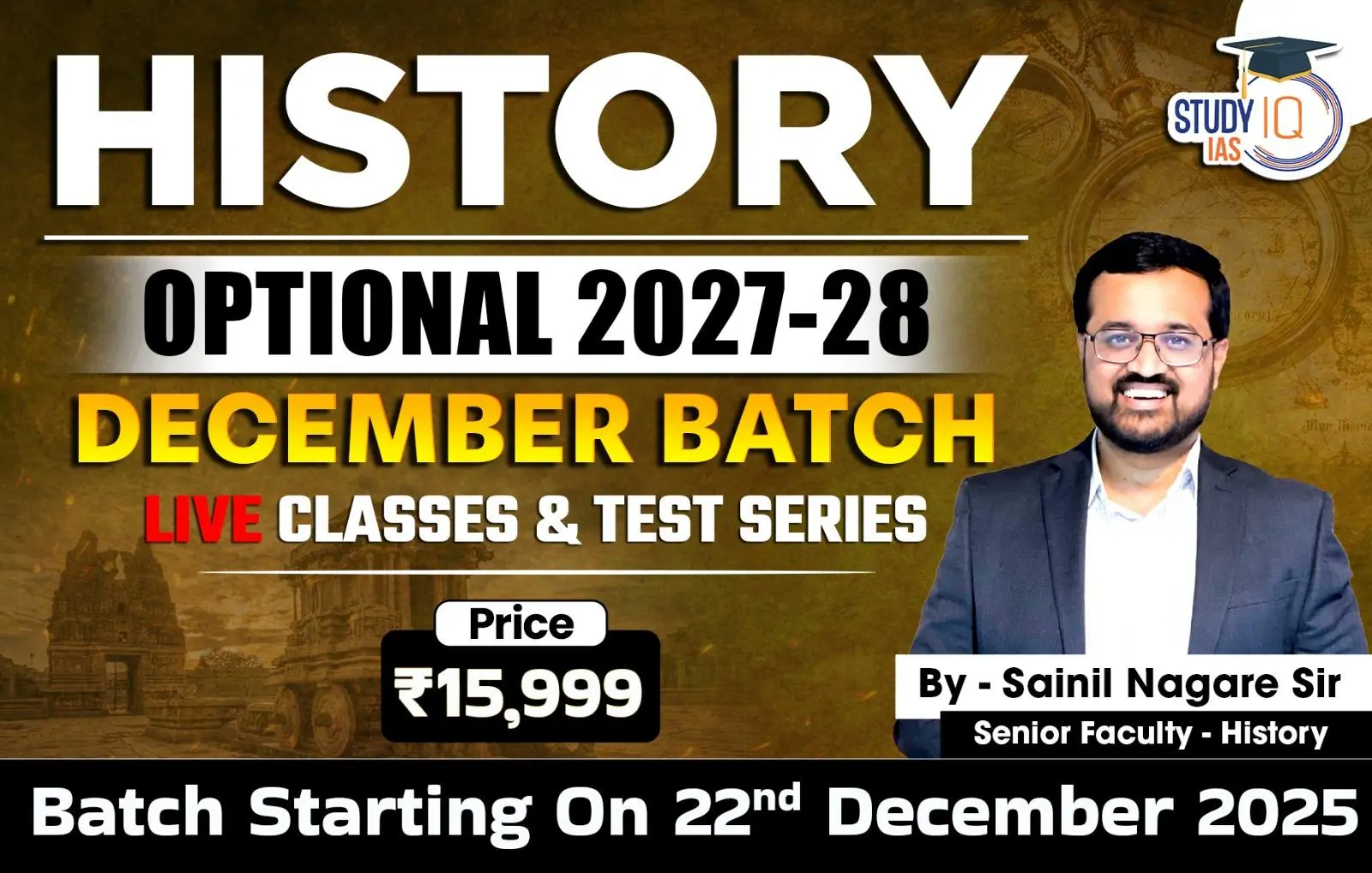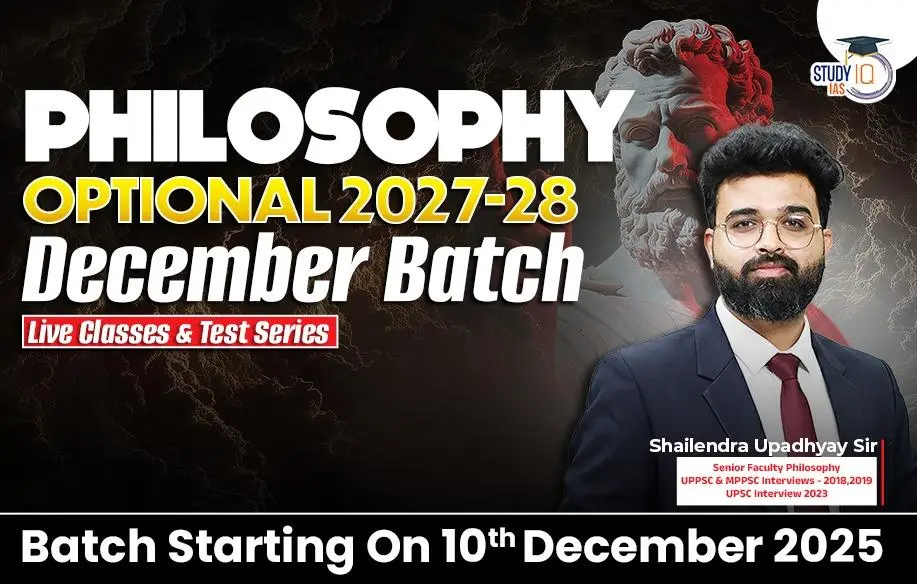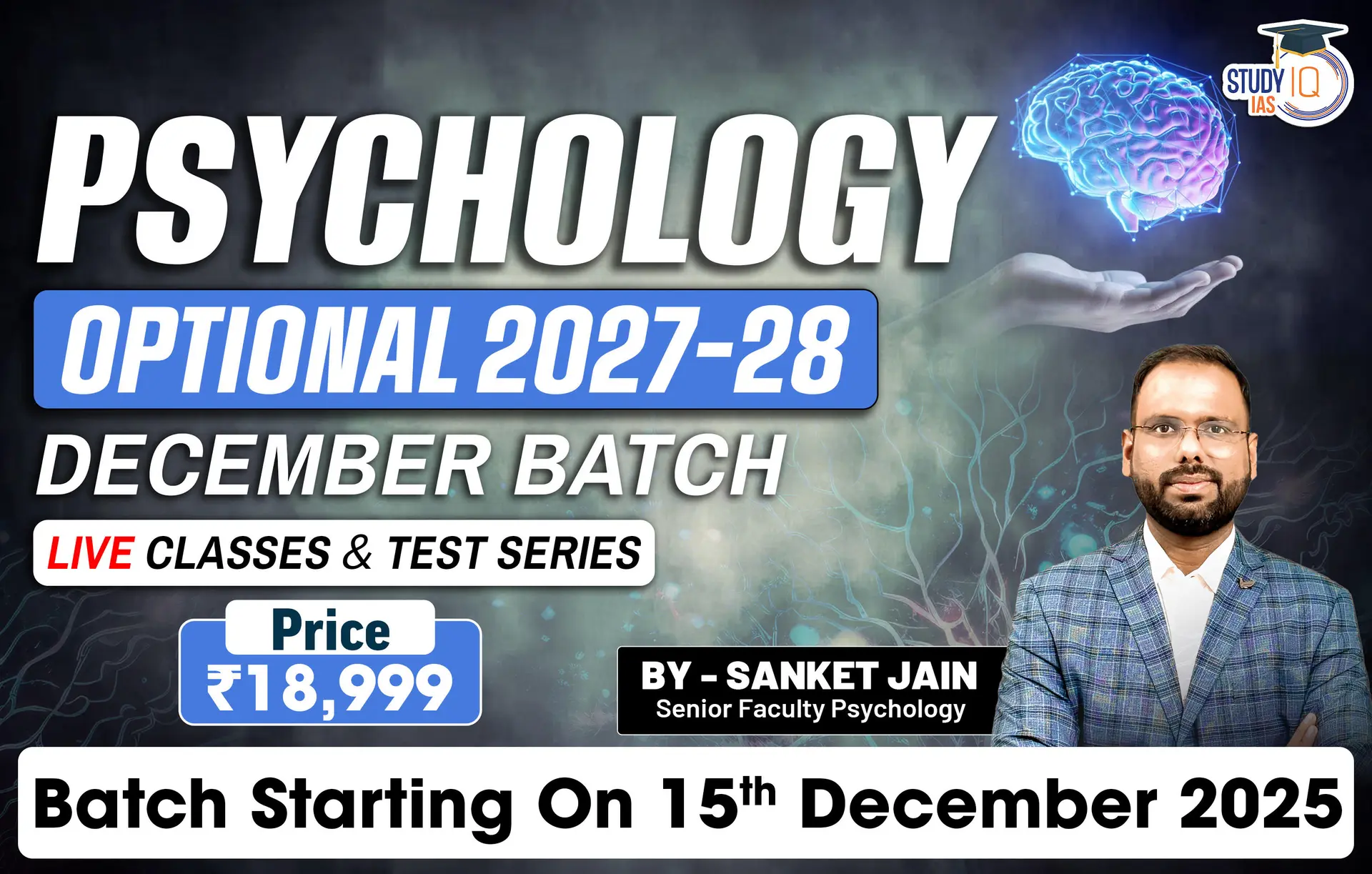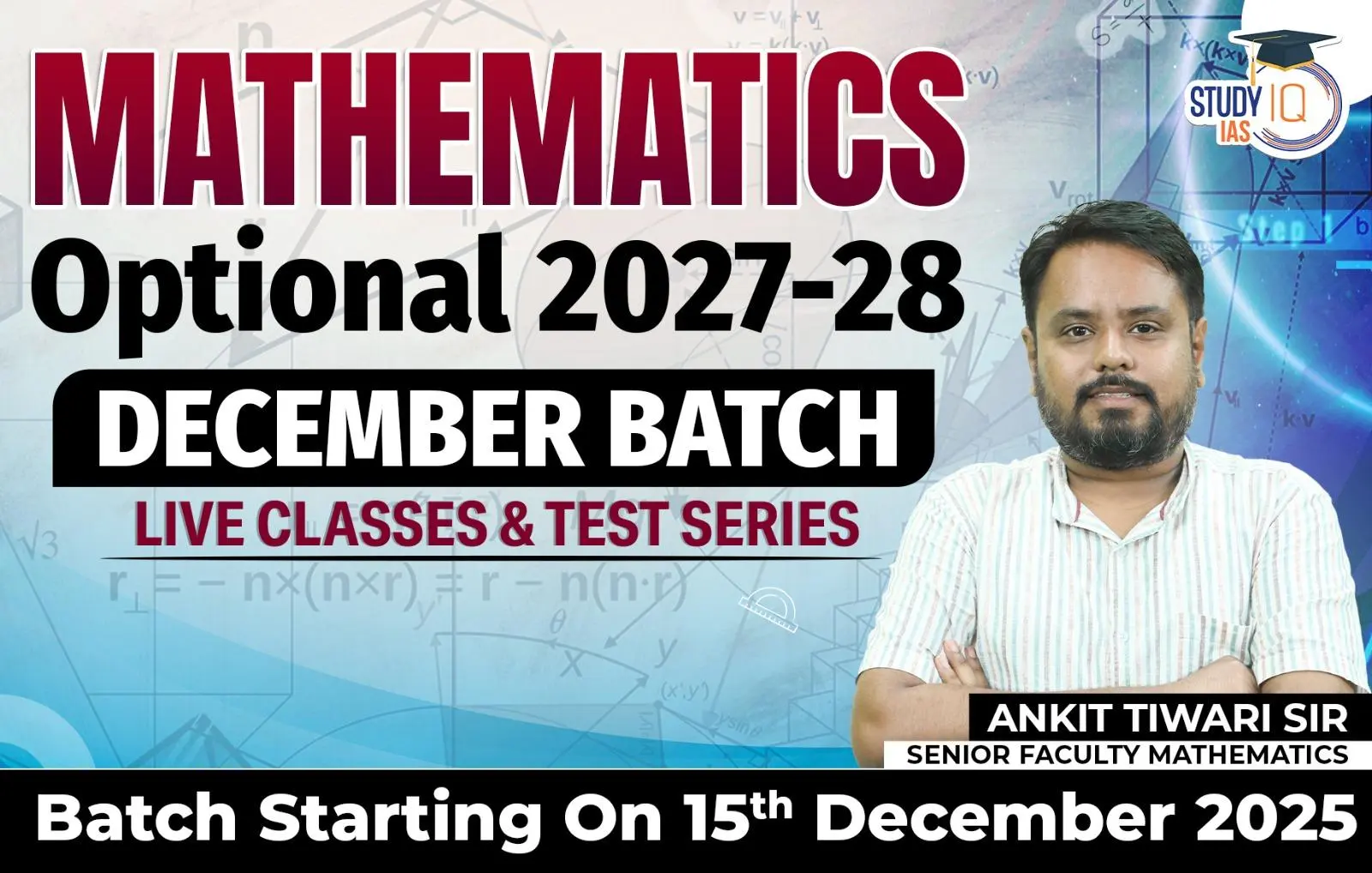Daily Quiz 07 December 2024
Quiz-summary
0 of 5 questions completed
Questions:
- 1
- 2
- 3
- 4
- 5
Information
- Click on – ‘Start Quiz’ button
- Solve Questions
- Click on ‘Next’ button
- Click on ‘Finish Quiz’ button
- Now click on ‘View Questions’ button – here you will see solutions and links.
- The test contains a total of 5 questions.
- Click on the most appropriate option to mark it as your answer.
- You will be awarded Two marks for each correct answer.
- You can change your answer by clicking on some other option.
- A Number list of all questions appears at the top side of the screen.
- You can access the questions in any order by clicking on the question number given on the number list.
- You can use rough sheets while taking the test.
- Do not use calculators, log tables, dictionaries, or any other printed/online reference material during the test.
- Do not click the button “Finish Quiz” before completing the test. A test once submitted cannot be resumed.
You have already completed the quiz before. Hence you can not start it again.
Quiz is loading...
You must sign in or sign up to start the quiz.
You have to finish following quiz, to start this quiz:
- 1
- 2
- 3
- 4
- 5
- Answered
- Review
-
Question 1 of 5
1. Question
1 pointsConsider the following satellites:
1. INSAT-3DR
2. Geo-Kompsat2-AMI
3. Meteosat-9
4. Feng Yun-4A/4B
5. HIMAWARI-8
How many of the above satellites can be presently used for analyzing the data on farm fires?Correct
Answer: D
Explanation:
Option (d) is correct: ISRO aims to develop custom algorithms for analysing data from foreign satellites to generate validated fire products for India to improve the detection of farm fires. Currently data from satellites like INSAT-3DR (India), Geo-Kompsat 2-AMI (South Korea), Meteosat-9 (EU), Feng Yun-4A/4B (China) and HIMAWARI-8 (Japan) is used which is not reliable for accurate farm fire counts in regions like Punjab and Haryana. Data processing and fire detection algorithms for foreign geostationary satellite data are developed by respective agencies and are not validated over India.
Incorrect
Answer: D
Explanation:
Option (d) is correct: ISRO aims to develop custom algorithms for analysing data from foreign satellites to generate validated fire products for India to improve the detection of farm fires. Currently data from satellites like INSAT-3DR (India), Geo-Kompsat 2-AMI (South Korea), Meteosat-9 (EU), Feng Yun-4A/4B (China) and HIMAWARI-8 (Japan) is used which is not reliable for accurate farm fire counts in regions like Punjab and Haryana. Data processing and fire detection algorithms for foreign geostationary satellite data are developed by respective agencies and are not validated over India.
-
Question 2 of 5
2. Question
1 pointsConsider the following statements with respect to the Paris Agreement:
- It is a legally binding international treaty that aims to reduce greenhouse gas emissions and adapt to the effects of climate change.
- If a member state wants to withdraw from the treaty, it has to submit the notification of a withdrawal to the Office of Legal Affairs of the UN.
- United States and Argentina have withdrawn from the Paris Agreement in the recent years.
Which of the statements given above is/are correct?
Correct
Answer: A
Explanation:
- Statement 1 is correct:Paris Agreement is a legally binding international treaty that aims to reduce greenhouse gas emissions and adapt to the effects of climate change. It aims to limit global warming to below 2°C above pre-industrial levels, with efforts to limit it to 5°C.
- Statement 2 is correct:If a member state wants to withdraw from the treaty, it has to submit the notification of a withdrawal to the Office of Legal Affairs of the UN. Withdrawal becomes effective one year after notification to the UN’s Office of Legal Affairs. During this period, the country must fully participate in the Agreement’s activities.
Statement 3 is incorrect:Out of 198 members of United Nations Framework Convention on Climate Change (UNFCCC) 195 have ratified the treaty. The United States withdrew from the agreement in 2020, but rejoined in 2021. Argentina’s far-right President Javier Milei is considering withdrawing his country from the Paris Agreement.
Incorrect
Answer: A
Explanation:
- Statement 1 is correct:Paris Agreement is a legally binding international treaty that aims to reduce greenhouse gas emissions and adapt to the effects of climate change. It aims to limit global warming to below 2°C above pre-industrial levels, with efforts to limit it to 5°C.
- Statement 2 is correct:If a member state wants to withdraw from the treaty, it has to submit the notification of a withdrawal to the Office of Legal Affairs of the UN. Withdrawal becomes effective one year after notification to the UN’s Office of Legal Affairs. During this period, the country must fully participate in the Agreement’s activities.
Statement 3 is incorrect:Out of 198 members of United Nations Framework Convention on Climate Change (UNFCCC) 195 have ratified the treaty. The United States withdrew from the agreement in 2020, but rejoined in 2021. Argentina’s far-right President Javier Milei is considering withdrawing his country from the Paris Agreement.
-
Question 3 of 5
3. Question
1 pointsConsider the following statements with respect to the Battle of Saraighat, 1671, fought between Ahoms and Mughals:
- Mughal Army was led by Raja Ram Singh to conquer Assam.
- Ahom forces were led by PurandarSingha who used guerrila warfare.
- It was the last war between Mughals and Ahoms resulting in expulsion of Mughals from Assam forever.
Which of the statements given above is/are correct?
Correct
Answer: A
Explanation:
- Statement 1is correct:The Battle of Saraighat was a naval battle fought in 1671 between the Mughal Empire and the Ahom Kingdom on the Brahmaputra River in Guwahati, Assam.Mughal Emperor Aurangzeb sent an army under Raja Ram Singh to conquer Assam, expanding Mughal territory.
- Statement 2 is incorrect: LachitBorphukanled the Ahom forces and used strategic guerrilla warfare, naval tactics, and the natural terrain of the Brahmaputra River to defeat the Mughals despite being outnumbered. He was a skilled commander, expert in guerrilla warfare & later became commander-in-chief of the Ahom army (appointed by PrataapSingha). INS Lachit, Indian Navy’s guided-missile destroyer is named in his honour.
Statement 3 is incorrect: However, the Battle of Saraighat, although the most crucial battle of the Ahom-Mughal war, was not the last war. In 1682 CE, during the reign of AhomSwargadeoGadadharSingha, the battle of Itakhuli was fought between these two forces after which Mughals were expelled from Assam forever.
Incorrect
Answer: A
Explanation:
- Statement 1is correct:The Battle of Saraighat was a naval battle fought in 1671 between the Mughal Empire and the Ahom Kingdom on the Brahmaputra River in Guwahati, Assam.Mughal Emperor Aurangzeb sent an army under Raja Ram Singh to conquer Assam, expanding Mughal territory.
- Statement 2 is incorrect: LachitBorphukanled the Ahom forces and used strategic guerrilla warfare, naval tactics, and the natural terrain of the Brahmaputra River to defeat the Mughals despite being outnumbered. He was a skilled commander, expert in guerrilla warfare & later became commander-in-chief of the Ahom army (appointed by PrataapSingha). INS Lachit, Indian Navy’s guided-missile destroyer is named in his honour.
Statement 3 is incorrect: However, the Battle of Saraighat, although the most crucial battle of the Ahom-Mughal war, was not the last war. In 1682 CE, during the reign of AhomSwargadeoGadadharSingha, the battle of Itakhuli was fought between these two forces after which Mughals were expelled from Assam forever.
-
Question 4 of 5
4. Question
1 pointsWho among the following presided over the Karachi session of Congress in 1931?
Correct
Answer: C
Explanation:
- Option (c) iscorrect:The Karachi Session of the Indian National Congress, held in 1931, adopted the famous resolution outlining the shape of independent India’s Constitution. Some basic values, like universal adult franchise, the right to freedom and equality, and protection of the rights of the minorities, were accepted by all leaders. SardarVallabhbhai Patel presided over the session. SardarVallabhbhai Patel is known as the architect of India’s political unity because of his role in unifying the country after independence. Patel led the integration of over 560 princely states into the Union of India. His diplomatic approach and tact led to the peaceful accession of most states. Despite immense challenges, he united the nation through diplomacy and firmness, earning the title of “The Iron Man of India.” His work ensured a stable foundation for a democratic and sovereign India. Patel also played a key role in framing the Constitution and establishing administrative frameworks.
Incorrect
Answer: C
Explanation:
- Option (c) iscorrect:The Karachi Session of the Indian National Congress, held in 1931, adopted the famous resolution outlining the shape of independent India’s Constitution. Some basic values, like universal adult franchise, the right to freedom and equality, and protection of the rights of the minorities, were accepted by all leaders. SardarVallabhbhai Patel presided over the session. SardarVallabhbhai Patel is known as the architect of India’s political unity because of his role in unifying the country after independence. Patel led the integration of over 560 princely states into the Union of India. His diplomatic approach and tact led to the peaceful accession of most states. Despite immense challenges, he united the nation through diplomacy and firmness, earning the title of “The Iron Man of India.” His work ensured a stable foundation for a democratic and sovereign India. Patel also played a key role in framing the Constitution and establishing administrative frameworks.
-
Question 5 of 5
5. Question
1 pointsThe drafting committee was the most important committee of the Constituent Assembly. Who among the following was not a member of the Drafting Committee?
Correct
Answer: D
Explanation:
Option (d) is correct: The Drafting Committee was set up on 29th August 1947, by the constituent assembly to scrutinize the draft of the text of the Constitution of India prepared by the Constitutional Adviser in order to give effect to the decision taken by the Constituent Assembly and to submit to the assembly for consideration. The Drafting Committee had seven members that included: AlladiKrishnaswamiAyyar, N. Gopalaswami; B.R. Ambedkar, K.M Munshi, Mohammad Saadulla, B.L. Mitter and D.P. Khaitan. At the first meeting that took place on 30th August 1947, B.R. Ambedkar was elected as the Chairman of the Drafting Committee. K.M Munshi served on a number of committees of the Constituent Assembly, including the Drafting Committee, Advisory Committee, and Sub-Committee on Fundamental Rights. He founded BhartiyaVidyaBhavan in 1938.
Incorrect
Answer: D
Explanation:
Option (d) is correct: The Drafting Committee was set up on 29th August 1947, by the constituent assembly to scrutinize the draft of the text of the Constitution of India prepared by the Constitutional Adviser in order to give effect to the decision taken by the Constituent Assembly and to submit to the assembly for consideration. The Drafting Committee had seven members that included: AlladiKrishnaswamiAyyar, N. Gopalaswami; B.R. Ambedkar, K.M Munshi, Mohammad Saadulla, B.L. Mitter and D.P. Khaitan. At the first meeting that took place on 30th August 1947, B.R. Ambedkar was elected as the Chairman of the Drafting Committee. K.M Munshi served on a number of committees of the Constituent Assembly, including the Drafting Committee, Advisory Committee, and Sub-Committee on Fundamental Rights. He founded BhartiyaVidyaBhavan in 1938.
Results
0 of 5 questions answered correctly
Your time:
Time has elapsed
You have reached 0 of 0 points, (0)
| Average score |
|
| Your score |
|
Categories
- Not categorized 0%
| Pos. | Name | Entered on | Points | Result |
|---|---|---|---|---|
| Table is loading | ||||
| No data available | ||||
Sharing is caring!

 Daily Quiz 18 September 2025
Daily Quiz 18 September 2025

